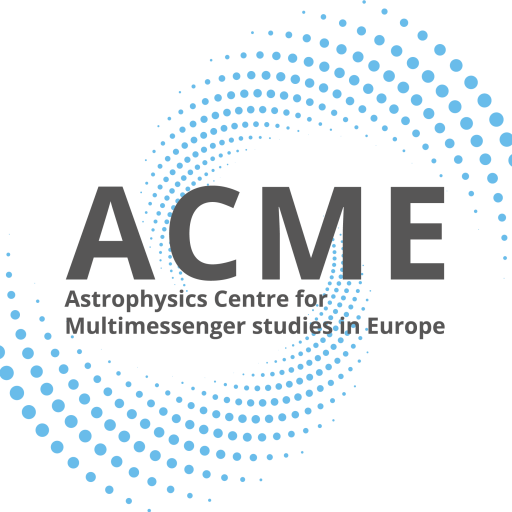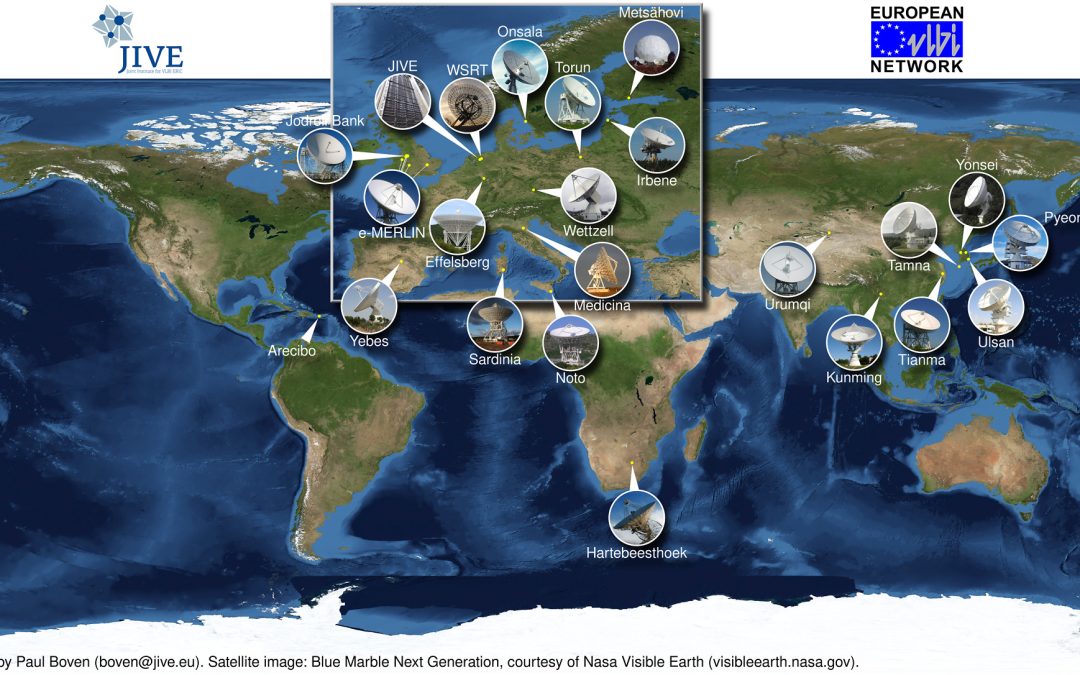The European VLBI Network (EVN) is an interferometric array of twelve radio telescopes spread throughout Europe, but also including eight telescopes in Asia and South Africa. With baselines ranging from 260-10k km, it provides sub-milliarcsecond imaging and astrometry, and participation of several 40-100m diameter telescopes provides unmatched sensitivity. With participation of the five UK e-MERLIN telescopes, shorter baselines (17-217 km) can also be achieved. The EVN often observes together with NRAO telescopes in the U.S. and LBA telescopes in Australia, further boosting angular resolution and sensitivity.
The Joint Institute for VLBI ERIC (JIV-ERIC) performs correlation of EVN observations and maintains the EVN Data Archive. JIV-ERIC also provides user support for all aspects of an astronomer’s project, from proposal preparation, to scheduling, to data analysis. Most EVN telescopes are capable of performing real-time “e-EVN”, in which data are streamed directly into the correlator via optical fibre, significantly reducing the turn-around time from observation to availability of data on the EVN Archive.
The directors of participating telescopes currently allocate three 3-week sessions per year to EVN observing, plus an additional 1-2 day e-EVN session per month (less July and August). Out-of-session observations are possible, but the specific array composition would depend on individual telescopes’ availability at the required epoch(s).
Main technical characteristics
- Principal frequency bands [GHz]: 1.4/1.6, 5, 6.0/6.7, 8.4, 22, 43
- Sensitivity [uJy/beam] in 1hr: 1.6GHz=16.2; 5GHz=6.1; 8.4GHz=12.0; 22GHz=20.1
- Typically ~1000 hours per year in user observations
Proposal information
There are three EVN calls for proposals per year, with deadlines at 1600 UT on 1 Feb, 1 Jun, and 1 Oct. Proposals can request regular observations in sessions or at specific dates out-of-session (the array for the latter will be on a best-availability basis).
Proposals for EVN + NRAO telescopes together can be submitted through the EVN as a “Global” proposal. Triggered proposals, to respond on shorter notice to pre-defined events occurring within scheduled sessions are also possible. Outside of the three proposal deadlines, target-of-opportunity proposals can be submitted for rare or unpredictable phenomena, with a similar caveat about the out-of session array composition.
Refer to www.evlbi.org/proposal-submission for more details about the various proposal types.
The current EVN Call for Proposals can be found at www.evlbi.org/sites/default/files/shared/EVNCfP.pdf
Website: www.evlbi.org

